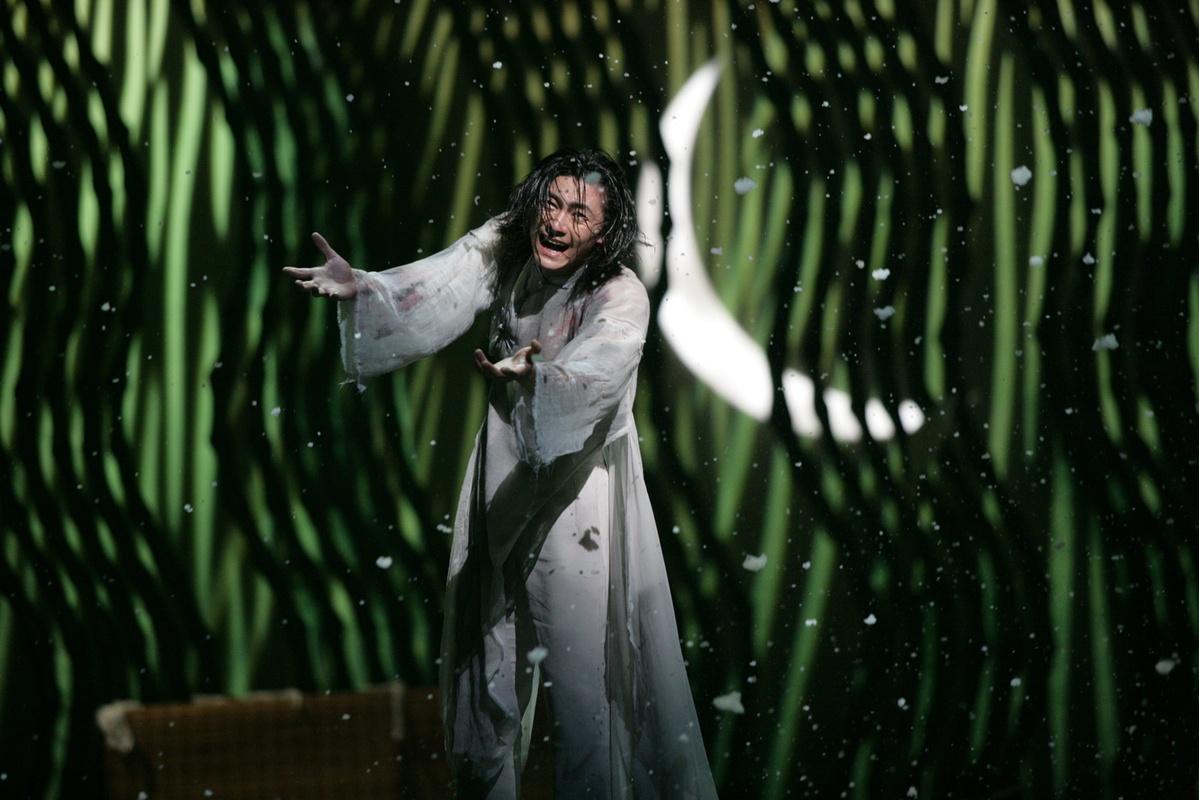Moonlight over the Erquan Pond

Moonlight over the Erquan Pond
二泉映月
Ballet in five acts
World premiere in 1998
By Liaoning Ballet of China
Artistic director: Wang Xunyi
Dance director: Qu Zijiao
Libretto: Yu Bing, Wang Xunyi, Men Wenyuan
Choreography: Men Wenyuan, Liu Jun, Liu Tingting, Zhang Zhi
Music: Zheng Bing
Set design: Zhang Jiwen
Lighting design: Yao Zhaoyu
Costume design: Song Li
Make-up: Li Mingming
Props design: Xu Shijun
(2006 version)
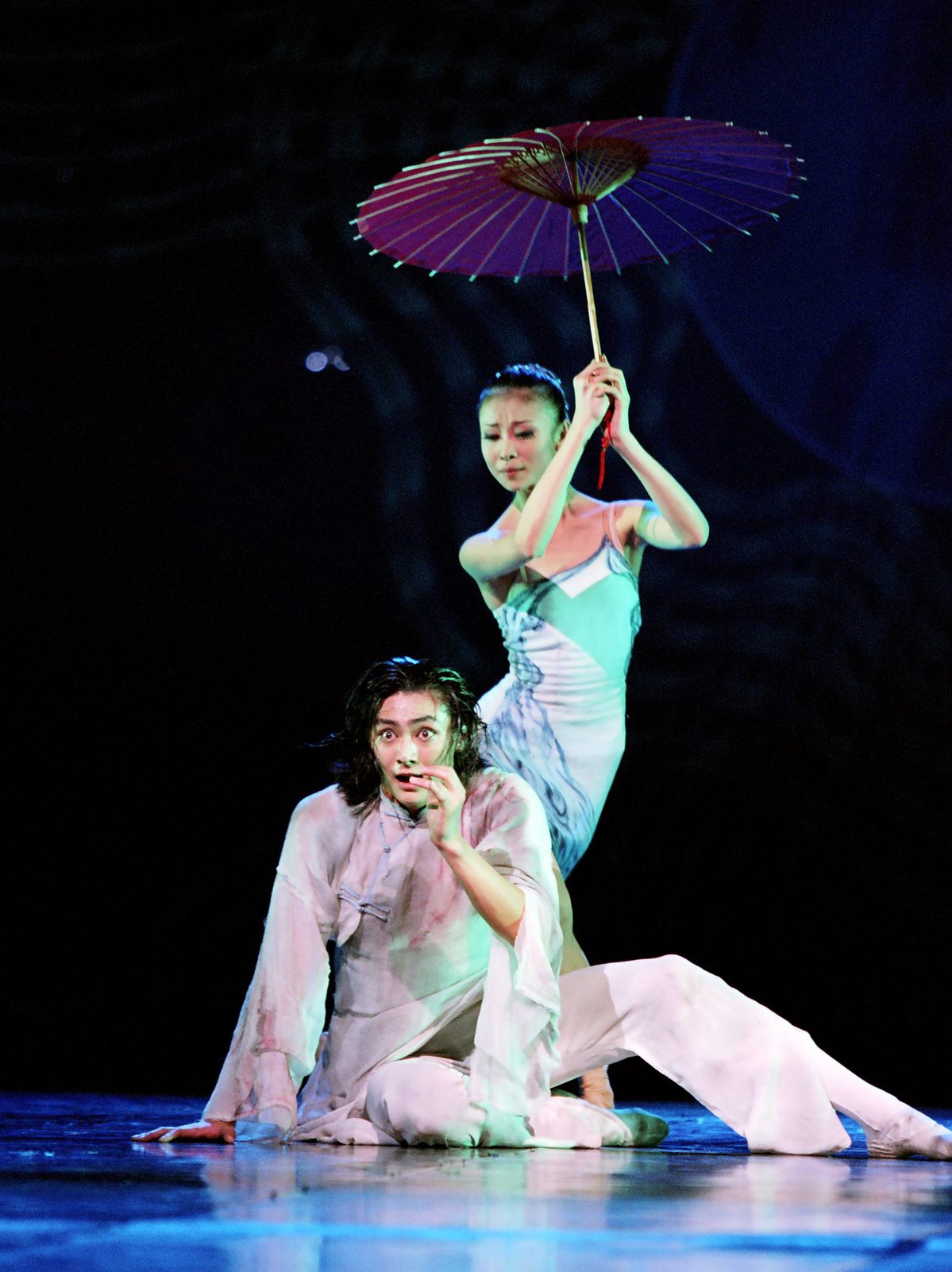
Inspired by the personal experiences of Hua Yanjun (also known byhis nickname Blind Abing), a renowned folk musician active from the 1910s to the 1940s in Wuxi city, East China’s Jiangsu province, and his erhu solo piece of the same title, Moonlight over the Erquan Pond (Erquan yingyue) depicts a heartbreaking romance set in a “watertown” on South China’s Yangtze River Delta.
Quan Ge, a talented folk musician who plays the erhu, and Yue Er, a beautiful embroiderer, fall in love and spend a happy time together in their hometown. Meanwhile, Master Gu, a wealthy local ruffian, also covets Yue Er. Forcefully taken to Gu’s home, Yue Er can’t bear Gu’s torture and stabs him to death. In a fit of revenge, Gu’s mother orders Quan Ge to perform at her son’s funeral where he hasto watch Yue Er thrown into the lake alive -and then blinds him in both eyes. Quan Ge, lost in deep sorrow, plays his erhu again, incorporating all the love and hatred he feels into the ethereal music.
Consisting of five acts, the ballet boasts an outstanding combination of oriental and Western arts. Firstly, the choreographic style is a key part of its success. For example, instead of kneeling down on one knee, the “fish crouching” (woyu) posture, a standard movement of Chinese classical dance, is employed in Yue Er’s solo.

The poise of the body, or shenyun, a terminology describing the essence of classical Chinese dance, is also broadly adopted. In the group dance of embroiderers from the first act, techniques and body postures of classic Chinese dance are elegantly incorporated, such as tichen (with the upper body bending and turning upright alternatively) and baziyuan (with both hands waved in circular movements), depicting the busy working scenario together with échappé and grand jeté pas de chat.
Meanwhile, hand movements of Chinese folk dance are accentuated to create a new visual effect, while the footwork in the pas de deux of Quan Ge and Yue Er is simplified to create a graceful beauty. In the red umbrella dance of the second act, the ballerinas pose in “three curves” while performing pas de bourree suivi, which vividly portrays the euphemistic temperament of the girls from South China’s Yangtze River Delta.
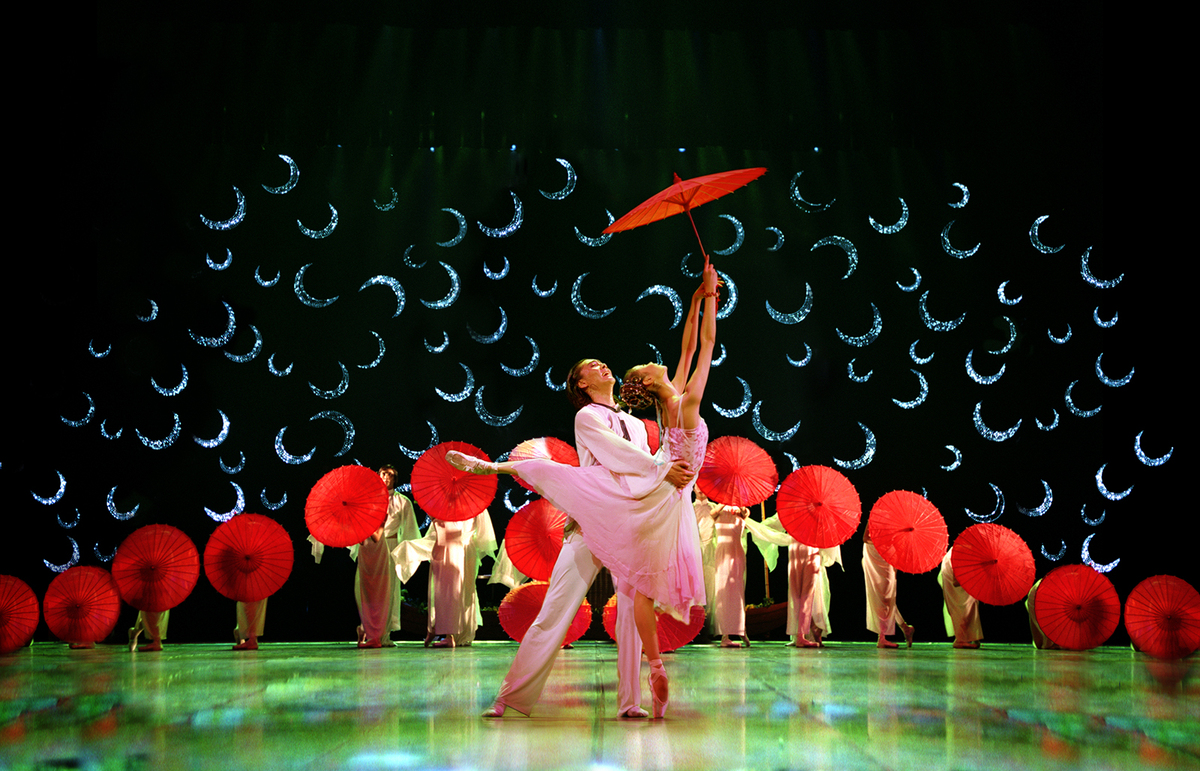
In addition to the dance language, the costumes, stage setting and props also contribute to the creation of an iconic Chinese style. Bamboo forests, bridges, small boats and a tea house, as well as the Chinese ink painting stage design, all seek to transport the audience to the watertown. The employment of circular fans, handkerchiefs and oiled paper umbrellas is considered a breakthrough in the traditional choreography of ballet, which normally focuses on footwork. Made of light and soft material, qipao, cloaks, knot buttons, and Chinese lapel garments all embody oriental beauty while facilitating the dancers’ movements.
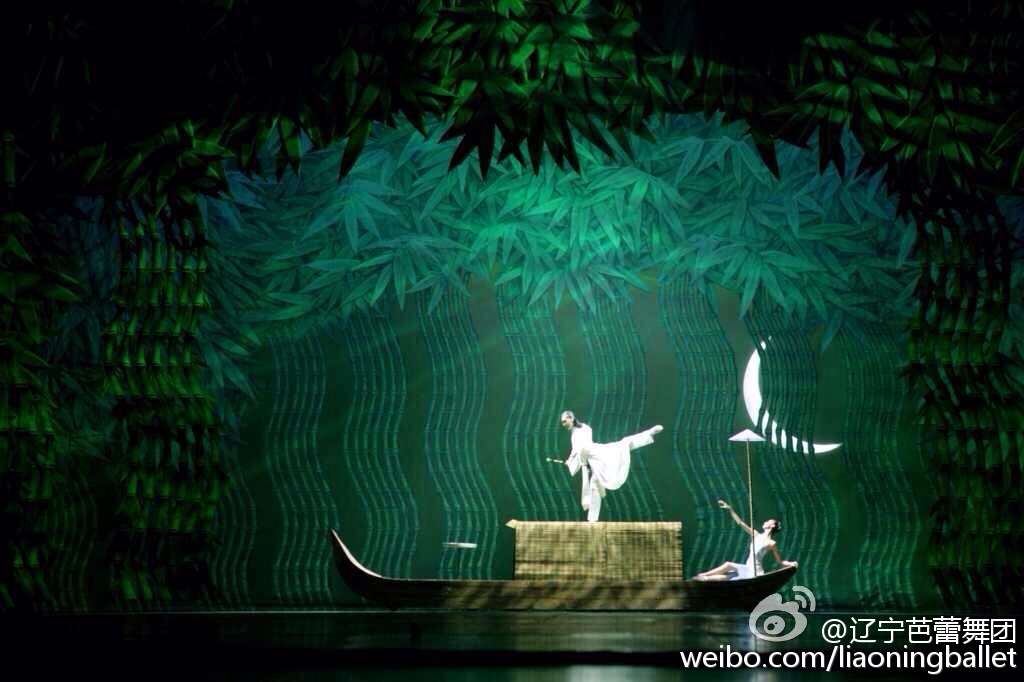

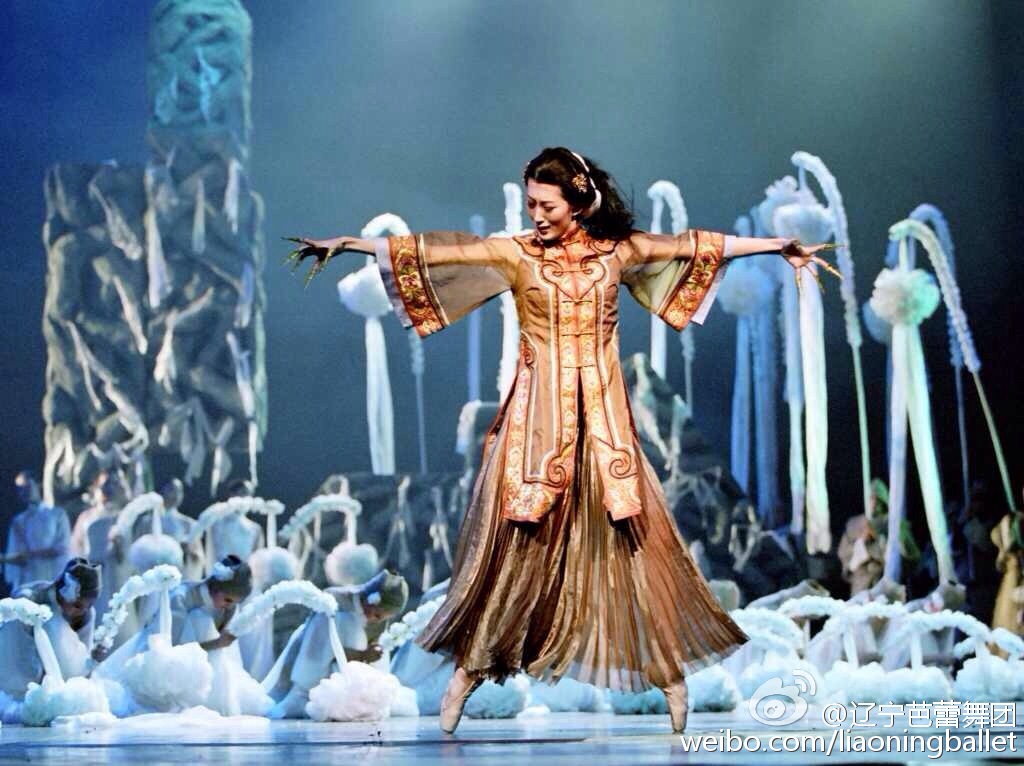
Working in harmony, the symphony and the Chinese folk music make a wonderful accompaniment to the plot of the ballet. In the third act, where Yue Er is confined to Gu’s mansion, a grand piece of symphony is played to imply the power and influence of Gu’s family. Likewise, the mournful erhu music accords with Quan Ge’s grief in the last act and, with the heavy snow, it offers an incomparable aesthetic experience.

